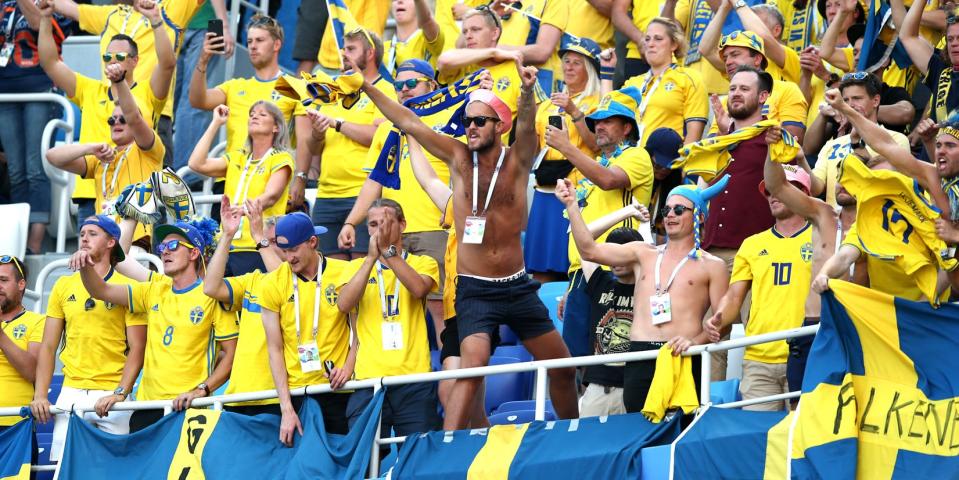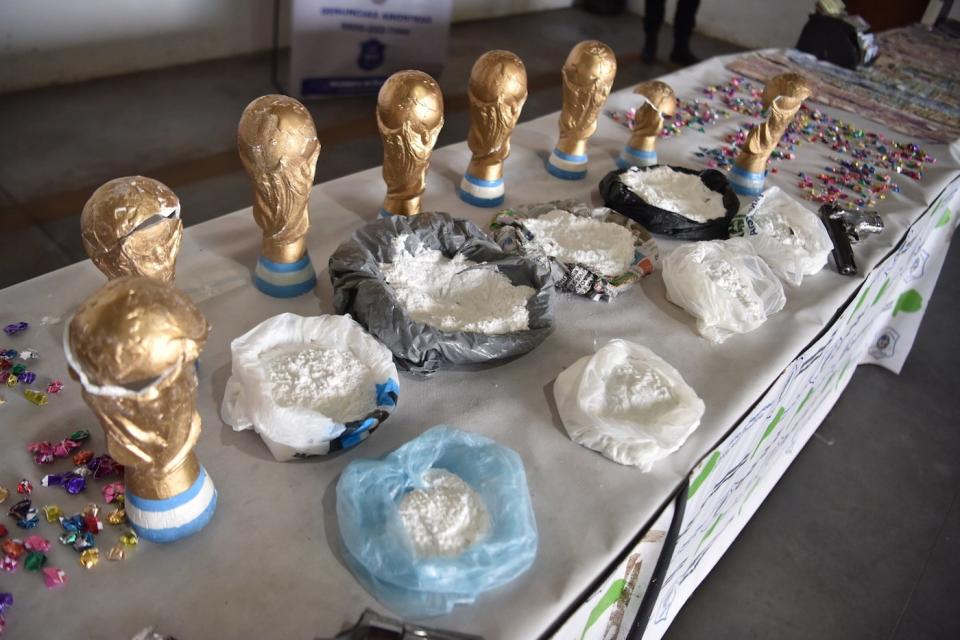How traffickers use World Cup mania to help them smuggle cocaine

Jan Kruger/Getty Images
The use of World Cup merchandise to smuggle cocaine around the world points to a longstanding relationship between drug trafficking and soccer, one of the world’s most-loved sports.
Fourteen cocaine-soaked shirts styled like the Colombian national soccer team’s uniform were seized by Colombian police at the international airport in the capital Bogotá on June 22.
Authorities said traffickers had dissolved approximately 5 kilograms of liquid cocaine into the shirts that were headed for the Netherlands. Upon arrival, the drug was to be extracted and transformed into a powder prior to distribution.
This week, Argentine authorities also discovered several kilograms of cocaine hidden within replica World Cup trophies in Buenos Aires, Clarín reported. The drugs appeared to be intended for local sale.
InSight Crime analysis

(National Security Ministry via AP)
Drug trafficking groups are highly innovative, and it is not surprising that they are taking advantage of the World Cup euphoria. Big, worldwide events such as soccer tournaments and the Olympic Games are a good opportunity for traffickers to conceal illegal drugs amid the flow merchandise and swarms of travelers.
At the same time, the sport of soccer more broadly has had a long relationship with drug trafficking, ranging from smuggling operations to higher-level criminal schemes.
Colombian traffickers’ relationship to soccer can be traced back to the 1980s, the heyday of the Medellín and Cali Cartels. Both cartels are said to have financed various clubs in Colombia and used them to launder substantial profits derived from cocaine trafficking.
Argentina’s most notorious football fans, the “barras bravas,” have also long been tied to drug crimes. Several have been accused of drug dealing, and of having relationships with drug trafficking gangs.
In addition to abusing the sport’s paraphernalia, some traffickers have used soccer as a cover to set up international trafficking rings.
Today, InSight Crime believes that soccer matches are also a favoured meeting place for drug traffickers, particularly the “Invisibles” — powerful crime bosses who hide in broad daylight.
NOW WATCH: The wives of high-level cocaine traffickers reveal how their husbands took down 'El Chapo'
See Also:

 Yahoo News
Yahoo News 
